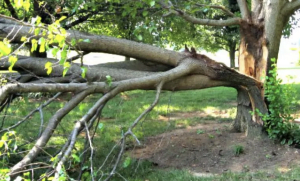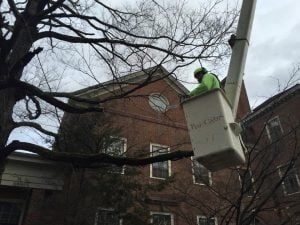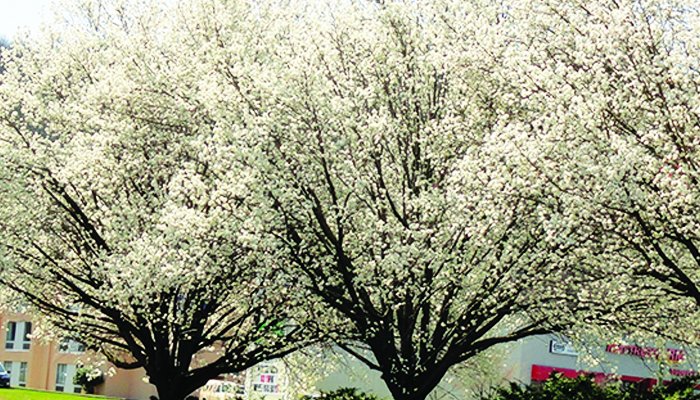Have you heard about the Bradford Pear Tree Crisis? The Bradford Pear Tree has been making its way into many news articles lately, and not for good reason. Its environmental impacts, crossbreeding tendencies, short lifespan, and foul smell are just some of the Bradford Pear Tree issues addressed.
The Bradford Pear Tree (which is a variation of the China native Callery Pear) was developed in 1963 by scientists. Due to its quick growth pattern and appealing look, the ornamental fruit tree became very popular. Bradford Pear Trees grow to reach about 30-50 feet but have a short lifespan of just 20-25 years. They often begin falling apart within 20 years, due to the combination of vigorous growth, weak wood, and poor branch structure.
Prone To Breakage:
 The Bradford Pear Tree is notorious for having limbs that split away from the main trunk.
The Bradford Pear Tree is notorious for having limbs that split away from the main trunk.- They have weak crotches, allowing large limbs to snap off without warning (leading to damages).
- The limbs of a Bradford Pear Tree are also prone to storm breakage.
Smelly:
- While the snow-white blossoms of this pear tree are beautiful to look at, they have a putrid smell.
- The fruit that grows from it (resembling what looks like little hard berries) are equally as unpleasant.
It’s Invasive:
- The Bradford Pear Tree has been labeled as an invasive species by environmentalists due to its rapid reproductive/cross pollination behavior with other pear varieties leading to rapid spreading.
- Also spread through bird droppings after eating the pear fruits.
How To Remove:
- Due to its increased bad reputation in recent years, many communities are adopting programs to get rid of these trees. But, the tree, stump, and all of its roots must be completely removed to avoid quick regeneration.
Maintenance:
 Bradford Pear Trees require a lot of pruning to avoid narrow crotches and help prevent splits.
Bradford Pear Trees require a lot of pruning to avoid narrow crotches and help prevent splits.- By thinning out the branches at the crotch, you can relieve stress and weight – do NOT top, ever.
The Positives:
- Despite the hysteria over the Bradford Pear Tree crisis, it’s not all bad.
- These trees can make for a beautiful landscape addition if you are up for the maintenance involved.
- It makes a great shade tree.
- It is still a tree – and thus helps to suck carbon dioxide out of the air and prevent rainwater runoff.
The popular opinion among environmentalists is to remove your Bradford Pear Tree whenever possible. Its weak structure, cross pollination tendencies, high maintenance requirements, and its negative environmental impact have contributed to earning this tree a pretty bad public reputation. When planting trees on your property, rely on the expertise and knowledge of your professional arborist to know what to plant, and where to plant it. If you have a Bradford Pear Tree you would like removed, contact us for your free tree removal consultation!


